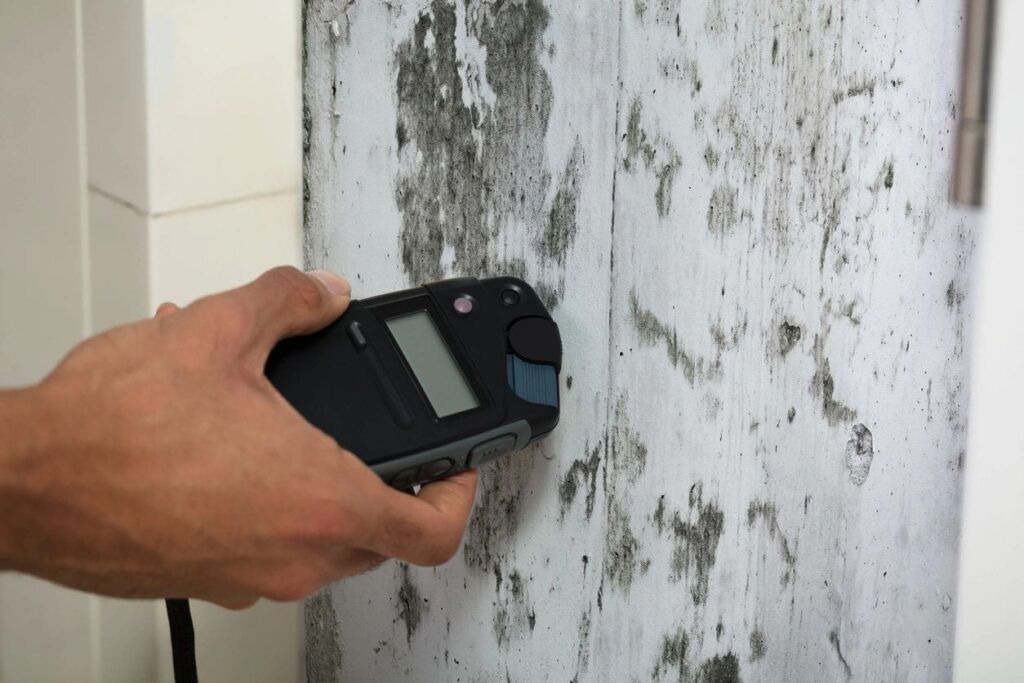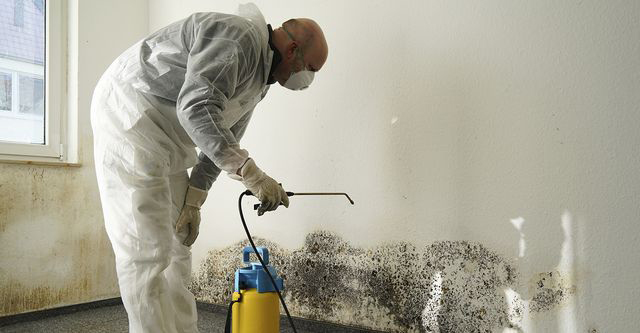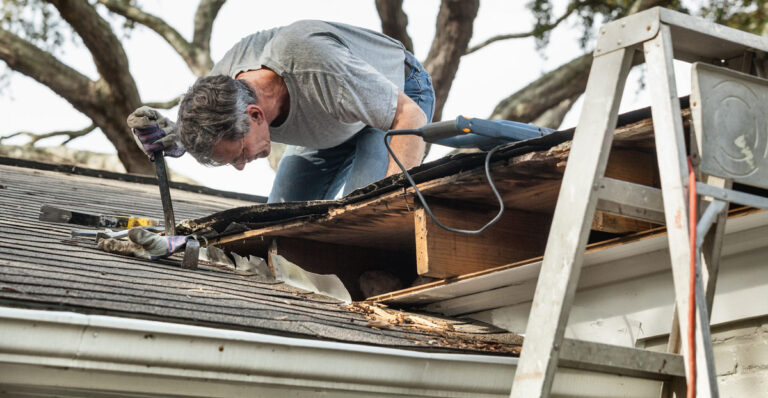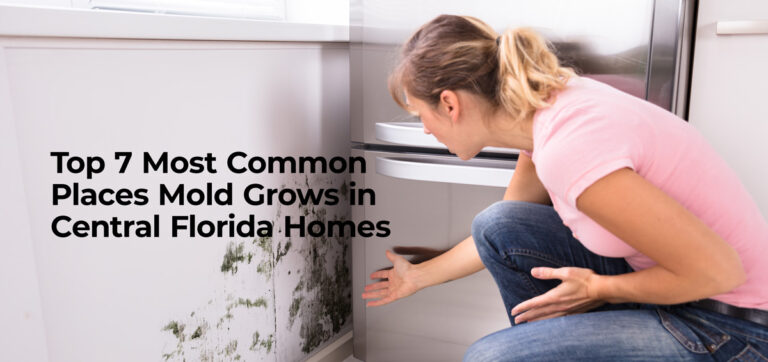The Importance of Professional Mold Inspection and Testing: Protecting Your Health and Home
Mold is a problem that affects not only homes but also businesses. It is an indoor air quality problem that can cause health problems, and it is essential to have a mold inspection and testing done on a regular basis to ensure that your home and business are safe. This blog will discuss the different types of mold and the effects they have on the human body. It will also explain how professional mold inspection and testing work and the importance of doing this regularly.
What is mold?
Mold is a type of fungus that grows in damp or humid conditions. It is found both indoors and outdoors and can appear in a variety of colors, including black, brown, green, and white. Mold can grow on a wide range of materials, including wood, paper, and fabric, and can cause damage to buildings and other structures if left unchecked. In addition to physical damage, mold can also have negative health effects on humans, including allergies and respiratory problems. It is important to keep indoor environments dry and well-ventilated to prevent mold growth. If mold is detected, it is essential to address the issue promptly by cleaning and removing the affected materials and fixing the underlying cause of the moisture problem.
Mold can spread quickly, and small amounts can become large infestations if left untreated. It is essential to regularly check for signs of mold growth, such as a musty smell or visible discoloration on walls or other surfaces. If you suspect that you have a mold problem, it is important to take steps to identify and remove the mold as soon as possible. This may involve hiring a professional mold remediation company or taking steps to clean and remove the mold yourself. In some cases, it may be necessary to replace damaged materials or repair the structure to prevent future mold growth. It is also essential to address the underlying cause of the mold problem, such as a leaky roof or plumbing issue, to prevent the issue from recurring.

The effects of mold on health
Mold exposure can have a variety of adverse effects on health. Some people may be more sensitive to mold than others and may experience symptoms such as coughing, sneezing, and irritation of the eyes, nose, or throat. Mold can also trigger asthma attacks in people with asthma. In addition, some people may develop a type of allergy to mold, which can cause symptoms such as a runny nose, sneezing, and itchy eyes. Prolonged mold exposure can lead to more severe health problems, including respiratory infections and lung damage. It is essential to take steps to prevent mold growth and to address any existing mold problems to protect your health and the health of those around you. If you are experiencing health issues that you believe may be related to mold exposure, it is essential to consult with a healthcare professional for proper diagnosis and treatment.
How to identify mold in the home
There are several signs that you may have a mold problem in your home. One common sign of mold is a musty smell. This smell may be more noticeable in some regions of the house, such as basements or closets. Another sign of decay is visible discoloration on walls, ceilings, or other surfaces. Mold can appear in various colors, including black, brown, green, and white. If you notice any of these signs, it is essential to investigate further to determine if mold is present.
In some cases, you may be able to see the mold itself, either as a patch or as individual spores. It is also essential to check for moisture problems, as mold typically grows in damp or humid conditions. If you suspect a mold problem, it is necessary to identify and remove the mold as soon as possible to protect your health and the health of those around you.
If you suspect a mold problem but cannot see or smell it, there are other ways to identify mold in your home. One option is to use a moisture meter to measure the moisture content of materials in your home. If you find that the moisture levels are higher than usual, this could indicate a mold problem. You can also use a mold test kit to collect samples from your home and have them analyzed by a laboratory. This can help you determine the type and extent of the mold problem and can also help you choose the best course of action for removing the mold. If you cannot identify or locate the mold on your own, you may want to consider hiring a professional mold inspection company to assess your home and provide you with a report on the presence and extent of any mold.
The importance of professional mold inspection and testing
Professional mold inspection and testing are essential for several reasons. First and foremost, a professional mold inspector has the knowledge, experience, and specialized equipment to accurately assess the presence and extent of mold in your home. This is especially important if you are unable to see or smell the mold or if you are unsure of the type of mold that is present. A professional mold inspector can also help you identify the underlying cause of the mold problem, such as a leaky roof or plumbing issue, and recommend the appropriate steps for addressing the issue and preventing future mold growth. In addition, a professional mold inspector can provide you with a detailed report on the condition of your home and the steps that need to be taken to remediate any mold problems. This can be particularly useful if you are buying or selling a home, as it can help you make informed decisions about the property. Overall, professional mold inspection and testing is an essential step in protecting the health and safety of you and your family, as well as the integrity of your home.
How professional mold inspection and testing work
Professional mold inspection and testing typically involve several steps. First, the inspector will perform a visual assessment of the property to identify any visible signs of mold, such as discoloration or a musty smell. The inspector will also use specialized equipment, such as moisture meters and thermal imaging cameras, to detect moisture levels and identify areas of the home where mold may be present but not visible. The inspector may also collect samples of visible mold or suspicious materials for laboratory analysis. Once the inspection is complete, the inspector will provide you with a report detailing the findings of the inspection, including the type and extent of any mold present, the underlying cause of the mold problem, and recommendations for remediation. If necessary, the inspector may also recommend further testing, such as air quality testing, to determine the extent of the mold problem and the potential health risks associated with it. Overall, professional mold inspection and testing is a thorough and reliable process for identifying and addressing mold problems in your home.

Conclusion
Mold is a problem that affects both indoor and outdoor spaces. As a result, it is essential to know how to identify mold and protect yourself and your loved ones from its harmful effects. In this blog, we discuss the importance of professional mold inspection and testing and highlight the benefits of having this service performed. Take a look at the blog for more information on how to protect yourself and your home from mold.
At Healthy Home Environmental Services, we understand the importance of protecting your family from mold and other harmful indoor air quality problems. We offer professional mold inspection and testing services that will identify any visible signs of decay, determine the underlying cause of the problem, and provide you with a report detailing all findings.









